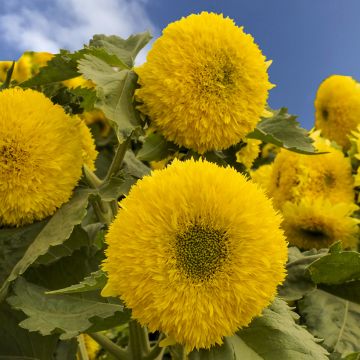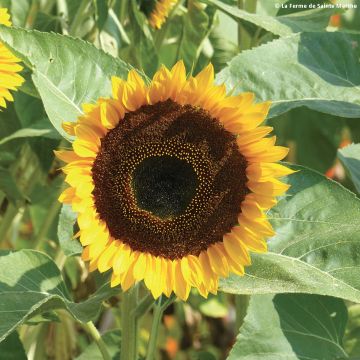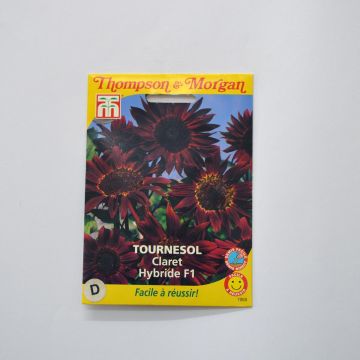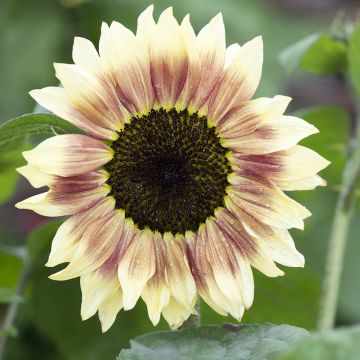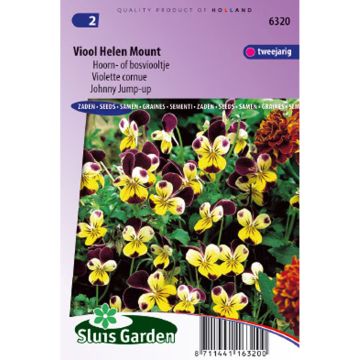Shipping country and language
Your country of residence may be:
Your country of residence is:
For a better user experience on our website, you can select:
Your shipping country:
Andorra
Austria
Belgium
Bulgaria
Canada
Chile
Croatia
Cyprus
Czechia
Denmark
Estonia
Finland
France
Germany
Greece
Hungary
Iceland
Ireland
Italy
Latvia
Lithuania
Luxembourg
Malta
Monaco
Netherlands
Poland
Portugal
Romania
Slovakia
Slovenia
Spain
Sweden
Switzerland
United Kingdom
We only deliver seed and bulb products to your country. If you add other products to your basket, they cannot be shipped.
Language:
French
German
Spanish
English
My Account
Hello
My wish lists
Plantfit
Log in / Register
Existing customer?
New customer?
Create an account to track your orders, access our customer service and, if you wish, make the most of our upcoming offers.
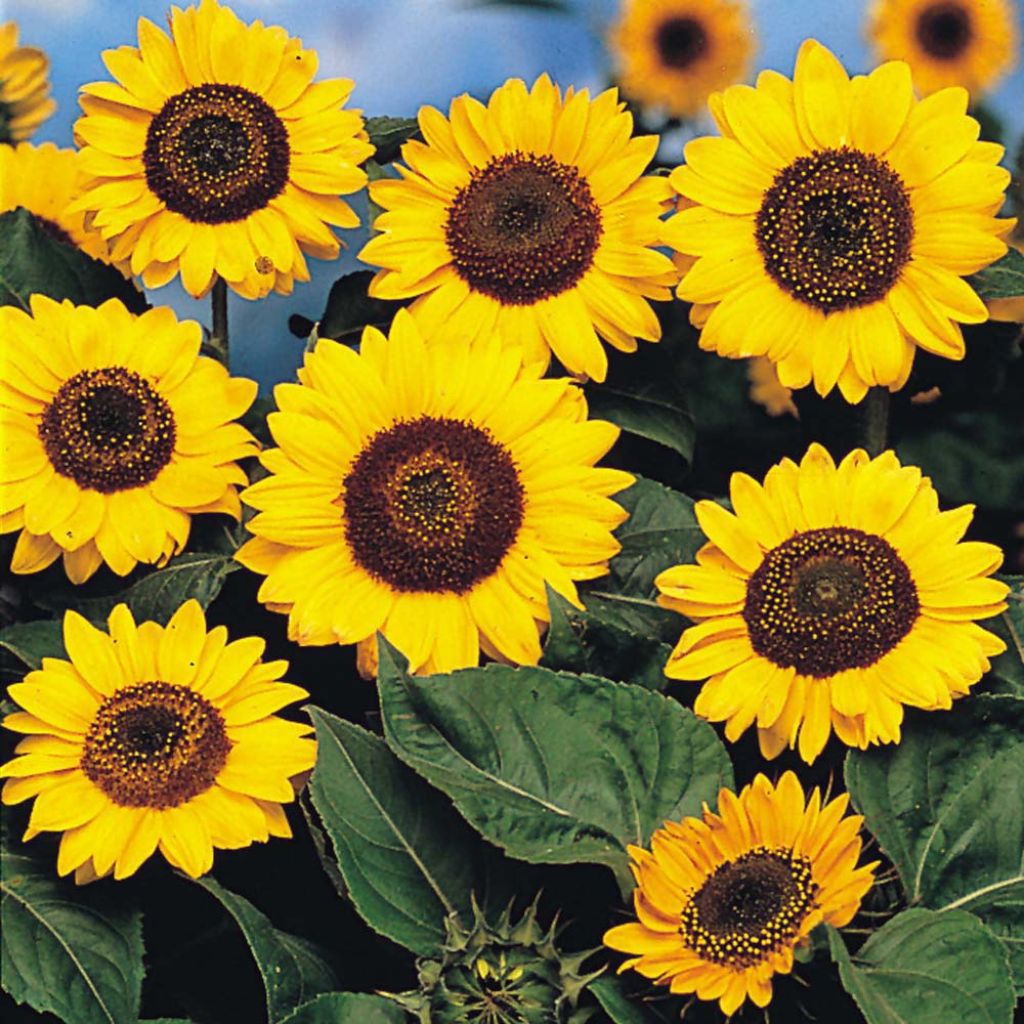

Graines de Tournesol Prado Yellow
Sunflower Prado Yellow - Helianthus annuus
Helianthus annuus Prado Yellow
Common Sunflower, Annual Sunflower
A lot of greenery but no flowers.
Monique D., 24/11/2016
Why not try an alternative variety in stock?
View all →Order in the next for dispatch today!
Dispatch by letter from €3.90.
Delivery charge from €5.90 Oversize package delivery charge from €6.90.
More information
This item is not available in your country.
Schedule delivery date,
and select date in basket
This plant carries a 6 months recovery warranty
More information
We guarantee the quality of our plants for a full growing cycle, and will replace at our expense any plant that fails to recover under normal climatic and planting conditions.
Seed-only orders are dispatched by sealed envelope. The delivery charge for seed-only orders is €3.90.
Does this plant fit my garden?
Set up your Plantfit profile →
Description
Helianthus annuus 'Prado Yellow', or Garden Sunflower, is an annual variety of medium size that has the advantage of naturally producing multiple stems per plant if the first true bud is pinched. All these short and sturdy stems bear equally beautiful sunflowers with a large brown centre surrounded by a dense collar of golden yellow. This fast-growing annual plant is very easy to sow and cultivate in all types of well-drained soils. It can be used as a background plant in flower beds or in the vegetable garden. Its flowers are perfect for bouquets.
Helianthus annuus is none other than the famous sunflower grown on a large scale for the oil extracted from its seeds. This large annual plant of the aster family has been domesticated by humans for a long time and has a controversial origin, but it is native to the American continent. The 'Prado Yellow' variety is a horticultural selection from the 'Prado' series, producing medium-sized plants that do not exceed 1.50m (5ft) in height and 35cm (14in) in diameter. They have an early flowering and can branch out into multiple floral stems when the first bud above the 5th bouquet of true leaves is pinched. 'Prado Yellow' produces magnificent inflorescences, with flower heads measuring 10 to 15cm (4 to 6in) in diameter, in a bright yellow colour with a dark brown centre. Its flowering period extends from July to September. Under optimal conditions, it takes 12 weeks from sowing to the start of flowering. The floral stems are very strong and well-branched, with one floral stem at each node, making this variety ideal for the production of cut flowers and oil-rich seeds. The foliage consists of leaves that are medium green in colour, single, cordate (heart-shaped), alternate, and sometimes opposite at the base. They are attached to the stem by a more or less long petiole and are rough to the touch.
Its ease of cultivation, large seeds that are easy to germinate, and reasonable size make it very popular with children who are getting started with gardening. The 'Prado Yellow' Sunflower is particularly suitable for ornamental flower beds, as well as for decorating chicken coops and vegetable gardens where it will attract many beneficial animals for gardeners. It only requires sun and soil that is not too dry to flourish effortlessly. It has a rustic appearance and as such, it will blend well in slightly wild areas of the garden, alongside Cosmos, sainfoin, perennial sweet peas, large Scabious, Gaillardias, Japanese anemones, and trailing Lantana.
Before flowering, the plant optimizes its growth by following the course of the sun. This phenomenon, called heliotropism, has given rise to some of its common names: Héliotrope, Tournesol, Sunflower, and Garden Sunflower.
Sunflower in the kitchen:
The buds, petals, and seeds are edible. Add a few petals to a green salad for colour contrast and their nutty flavour. The green buds can be blanched and then sautéed in garlic butter. Their flavor is similar to that of Jerusalem artichokes. The flesh of the seed can be consumed raw or roasted.
An ecological asset:
Throughout summer, the honey-rich flowers of Sunflowers attract pollinating insects and butterflies to your garden. This is a good way to improve the ecosystem of your garden and promote the production of fruits and vegetables in your vegetable garden.
The oil-rich seeds are particularly appreciated by birds (Parrots, Tits, etc.). At the end of flowering, harvest them to make some happy during the winter scarcity.
Sunflower Prado Yellow - Helianthus annuus in pictures


Flowering
Foliage
Plant habit
Botanical data
Helianthus
annuus
Prado Yellow
Asteraceae
Common Sunflower, Annual Sunflower
Cultivar or hybrid
Other Sunflower seeds
Planting and care
Sow the 'Prado Yellow' Sunflower from March to May in pots. Use good quality soil that you will sift on the surface to bind the seed to its substrate. Before sowing, lightly press the soil with a board. Sow your seeds by broadcasting. Cover the seeds by sprinkling soil on top or vermiculite, lightly press and water generously with fine rain. Place your pots in light, without direct sunlight, at a temperature of 20°C (68°F) to 25°C (77°F). Lower the temperature at night to 17°C (62.6°F) to create a beneficial alternation for germination.
The seeds will germinate in 21 days. Keep the soil moist but not excessive during growth. 15 days before their final placement, start gradually acclimating them to a temperature of 15°C (59°F).
By the end of May or early June, the temperature in the garden will be warm enough to plant your young plants. Choose a sunny location. Add a good shovelful of compost to each planting hole. Space your plants 45 to 60cm (18 to 24in) apart.
Seeds sown in May can be sown directly in place. By staggering your sowings, you will extend the flowering period until autumn.
Protect your seedlings from attacks by snails and slugs, which are fond of these young plants. By sowing chives near your sunflowers, you will deter aphids from settling there.
Pinch the 'Prado' Sunflower above the bud located at the level of the 5th cluster of true leaves to induce branching of the stems.
Sowing period
Intended location
- , onOrder confirmed
Reply from on Promesse de fleurs
Flower seeds
Haven't found what you were looking for?
Hardiness is the lowest winter temperature a plant can endure without suffering serious damage or even dying. However, hardiness is affected by location (a sheltered area, such as a patio), protection (winter cover) and soil type (hardiness is improved by well-drained soil).

Photo Sharing Terms & Conditions
In order to encourage gardeners to interact and share their experiences, Promesse de fleurs offers various media enabling content to be uploaded onto its Site - in particular via the ‘Photo sharing’ module.
The User agrees to refrain from:
- Posting any content that is illegal, prejudicial, insulting, racist, inciteful to hatred, revisionist, contrary to public decency, that infringes on privacy or on the privacy rights of third parties, in particular the publicity rights of persons and goods, intellectual property rights, or the right to privacy.
- Submitting content on behalf of a third party;
- Impersonate the identity of a third party and/or publish any personal information about a third party;
In general, the User undertakes to refrain from any unethical behaviour.
All Content (in particular text, comments, files, images, photos, videos, creative works, etc.), which may be subject to property or intellectual property rights, image or other private rights, shall remain the property of the User, subject to the limited rights granted by the terms of the licence granted by Promesse de fleurs as stated below. Users are at liberty to publish or not to publish such Content on the Site, notably via the ‘Photo Sharing’ facility, and accept that this Content shall be made public and freely accessible, notably on the Internet.
Users further acknowledge, undertake to have ,and guarantee that they hold all necessary rights and permissions to publish such material on the Site, in particular with regard to the legislation in force pertaining to any privacy, property, intellectual property, image, or contractual rights, or rights of any other nature. By publishing such Content on the Site, Users acknowledge accepting full liability as publishers of the Content within the meaning of the law, and grant Promesse de fleurs, free of charge, an inclusive, worldwide licence for the said Content for the entire duration of its publication, including all reproduction, representation, up/downloading, displaying, performing, transmission, and storage rights.
Users also grant permission for their name to be linked to the Content and accept that this link may not always be made available.
By engaging in posting material, Users consent to their Content becoming automatically accessible on the Internet, in particular on other sites and/or blogs and/or web pages of the Promesse de fleurs site, including in particular social pages and the Promesse de fleurs catalogue.
Users may secure the removal of entrusted content free of charge by issuing a simple request via our contact form.
The flowering period indicated on our website applies to countries and regions located in USDA zone 8 (France, the United Kingdom, Ireland, the Netherlands, etc.)
It will vary according to where you live:
- In zones 9 to 10 (Italy, Spain, Greece, etc.), flowering will occur about 2 to 4 weeks earlier.
- In zones 6 to 7 (Germany, Poland, Slovenia, and lower mountainous regions), flowering will be delayed by 2 to 3 weeks.
- In zone 5 (Central Europe, Scandinavia), blooming will be delayed by 3 to 5 weeks.
In temperate climates, pruning of spring-flowering shrubs (forsythia, spireas, etc.) should be done just after flowering.
Pruning of summer-flowering shrubs (Indian Lilac, Perovskia, etc.) can be done in winter or spring.
In cold regions as well as with frost-sensitive plants, avoid pruning too early when severe frosts may still occur.
The planting period indicated on our website applies to countries and regions located in USDA zone 8 (France, United Kingdom, Ireland, Netherlands).
It will vary according to where you live:
- In Mediterranean zones (Marseille, Madrid, Milan, etc.), autumn and winter are the best planting periods.
- In continental zones (Strasbourg, Munich, Vienna, etc.), delay planting by 2 to 3 weeks in spring and bring it forward by 2 to 4 weeks in autumn.
- In mountainous regions (the Alps, Pyrenees, Carpathians, etc.), it is best to plant in late spring (May-June) or late summer (August-September).
The harvesting period indicated on our website applies to countries and regions in USDA zone 8 (France, England, Ireland, the Netherlands).
In colder areas (Scandinavia, Poland, Austria...) fruit and vegetable harvests are likely to be delayed by 3-4 weeks.
In warmer areas (Italy, Spain, Greece, etc.), harvesting will probably take place earlier, depending on weather conditions.
The sowing periods indicated on our website apply to countries and regions within USDA Zone 8 (France, UK, Ireland, Netherlands).
In colder areas (Scandinavia, Poland, Austria...), delay any outdoor sowing by 3-4 weeks, or sow under glass.
In warmer climes (Italy, Spain, Greece, etc.), bring outdoor sowing forward by a few weeks.









